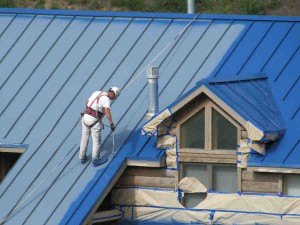Tips When Choosing a Metal Roof Primer
Whether your roof is old or new, metal primers are recommended before the application of paints on metal roofs to slow down the process of corrosion. Remember that corrosion comes from contact between bare metal and water.
Primers also ensure the paint you apply strongly stick to the surface to produce a long-lasting finish. They are specifically designed to fill microscopic gaps and bind to different substrates. Paints would often peel off from surfaces that were not treated with primer. This means more work and expenses for you.
Guides in Applying Primer
Keep in mind these reminders to ensure the proper application of your primer:
- Before using any primer, remove any rust, dirt, grease and scale on the metal surface; otherwise, your coatings will not stick properly and easily peel off from the surface in a short time. Be on the lookout for oil, which are not visible. Better to give the entire surface a thorough rubdown just to be sure.
- Apply a double coat of primer to ensure a long-lasting rust protection that will persist through the years. Since metal is prone to corrosion, the more primer you apply the better is the protection for the metal.
- Planning is important when doing paint jobs. Check the dry time for primers. Do not put more primer than you can paint the next day.
Things to Look for When Choosing a Primer
Always keep the following practical tips in mind when choosing a metal roof primer:
- Some metal primers do not contain rust-inhibiting properties or pigments. Do not buy these products since you will only be wasting your money. The rust-inhibitive pigments dissolve in and neutralize the electrolytic solutions that are the cause of corrosion.
- Special primers can chemically convert rust to solid metal salts, if cleaning and scrapping rust off the metal is not possible.
- Certain types of primers are not compatible with some coatings such as those containing zinc-chromate. Always ask for guidance from coating manufacturers.
- For rusted metal, use a zinc-chromate primer to do the job. This type of primer is especially suited for old and rusty metal surfaces.
- The label of the metal primer must state the product is rust inhibitive. You can normally find this on the front or title of the product. If not, look at the back of the label where the product description is located.
- The primer should have great wetting properties to provide greater penetration into the metal surface, whether corroded or not.
- Primers with fast drying and full-cure time will maximize your work production without sacrificing quality. They must also have excellent adhesion to different metal surfaces or substrates.
